Lubbock, the ashes of public space
May 27, 2008

Article written by Carlos García Vázquez
Public space and contemporary urban logic
Literature specializing in urban studies has for over a decade now been tackling a phenomenon that is radically altering the way we perceive and live in our cities: the crisis of public space.
The reasons used to explain this are many and complex, but three seem to be the focus of infection nourishing the cancer that is corroding one of the conceptual nodes of the traditional city. They are: the imperialism of mobility, the security obsession, and post-industrial economic logic. Since these inform the foundations over which the planet’s most dynamic cities are built, we might venture a first somber question: is public space incompatible with contemporary urban logic?
What better way to assess the dimensions of the crisis of public space in the latecapitalist universe, than by turning our attention to one of its epicenters: the thriving “sunbelt” of the United States, where some of the First World’s most competitive cities are located. Because they are so perfectly in tune with globalized economics and because their inhabitants are themselves so attuned to the concept of postmodern society, metropolises like Houston in Texas or Tucson and Phoenix in Arizona could be considered paradigms of the contemporary city. Curiously, in none of them is there a crisis of public space. For the simple reason that they are young cities where it was never relevant.
In the mid-eighties, the famous geographer and landscape architect J. B. Jackson claimed to have found “the prototype of American cities west of the Mississippi.” (1) He was referring to Lubbock, a Texan town of little over 200,000 people situated in the South Plains, the last of the great North American prairies before the Gulf of Mexico. For our purposes here let it serve as a prototype of the sunbelt cities, cities, Center. that have no public space, no center, no citizens.
The empire of mobility
For public space to exist, first there has to be an urban structure. That is, a physical space that is coherently articulated and impregnated with social significance. The traditional city is an intricate network of streets and squares that are conveniently arranged in sequences and organized in a hierarchy, a network where the city’s inhabitants can find an infinite number of collective references. In the traditional city, the concepts “center and periphery” have plenty of meaning, space has a given scale, and distances have logical time frames.
The empire of mobility is putting an end to all that. A fluid city, meaning a city that prioritizes the transport of persons, goods, and information, tends to be a city without hierarchies. Mobility is an abstract concept that generates transits, not places. It is something that passes by, but does not stay. Lubbock is a case in point. Its grid of streets is anodyne, the streets radically indifferentiated and equipotent. No part of it can properly be called a “center.” The historic core, or downtown, lacks the urban landmarks that would qualify it as such. Its two modest office towers (rising 16 and 20 floors, respectively) do not. Neither do its bland administrative buildings, nor the statue of local hero Buddy Holly. The rest is the story of Lubbock’s failure as a city: vacant lots, ruined warehouses, large tracts of parking lot. Lubbock is a desolate picture traversed only by homeless people in search of cover, heading for the refuge that the nearby public library offers.
But the uniformity of Lubbock does not end there. While in other American cities the ruin of downtown has given rise to opportunistic alternative subcenters offering the conditions of urban-ness that downtown is in no position to offer, in Lubbock no one has taken advantage of downtown’s misfortune. Take a look at its street network.
Superimposed on its unrelenting grid arranged according to the cardinal axes is a circular road, the Loop 289, and a network of highways that connect the city to the surrounding territory. When they penetrate the interior, they simply dilute, showing not the least bit of preference for any zone over another: the I-82 merges with 4th Street, the I-84 vanishes beside the railway track, and the I-87 crosses over in a smooth meander. No center, no subcenter… Lubbock is a chemically pure example of urban isotropy, a tangible demonstration of how the cities of the sunbelt go by without center.
Neither structural nor hierarchical, this urban model is hostile to the concept of public space and incapable of satisfying the attendant call for a road geometry that is coherent, laid out in sequences, and punctuated by a network of architectural landmarks. In Lubbock one has the nagging feeling that moving southward, northward, eastward and westward amount to the same thing, that what awaits us at the end of a drive is the same thing there was at the start and the same thing there was in between.
This produces in the citizen a total absence of interest in urban space, in anything outside of buildings. Lubbock’s inhabitants are never pedestrians. So it is that policemen tend to offer help to anyone they see walking around. That person must be in some kind of trouble! And so it is that there are hardly any sidewalks. There are sidewalks only in streets stretching in an east-west direction, and these are used only to get from a parked automobile to a house.
The empire of fear
Second, for public space to exist, there must be a feeling of social belonging. Here we come to what Jean-François Lyotard (2) refers to as one of the weak points of postmodern society, characterized as it is by debilitated social ties. The old referential poles (political parties, institutions, traditions…) have lost their power to bring people together, and no alternatives have arisen to replace them. Individuals then turn into themselves, social ties dissolve altogether, society becomes a mass of individual atoms.
This phenomenon is particularly pronounced in the United States, as exaltation of the individual is part and parcel of the country’s foundational myth. Moreover, it is taking place in a social environment that is in itself enormously complex, with a racial distribution undergoing revolutionary change on account of immigration and a social pyramid steep in a similarly uncontrolled process. Sociologists speak of the “latinamericanization” of the United States, the polarization of society into rich and poor, and the consequent impoverishment of the middle class.
The postmodern condition is incapable of accommodating this social mass characterized by ever increasing diversity and inequality. Unfamiliarity with the foreign and the different that induces an exacerbated individualism, the dismantling of old programs of the kind that were aimed at fostering equality, and most of all the rise of violence unleashed by social polarization. All this has triggered in the American middle class a generalized feeling of being threatened that has brought about a true obsession with security. And the propitiatory victim of this phenomenon is public space.
Lubbock’s socio-economic data are of the following nature: 25% of its population is of Hispanic origin, 20% lives below the poverty level, 20 murders are committed yearly… To be sure, this is a far cry from the delirium of a city like Los Angeles with its Hispanic majority, 40% of the population below the poverty threshold, and 100,000 homeless wandering around the streets.
Despite the relative calm of Lubbock, it seems that everywhere there is a call for social alarm. The local press continuously screams out headlines like “40,000 Mexicans assault the border nightly.” Electronic panels along the freeway blink “Child kidnapped. Brown Chevrolet van. Call police.” Signs near the airport gates warn “Alert level for today: yellow.” Fear is strategically aroused in doses. Many incomes depend on it in a country where security has become a huge business.
Indeed, the flourishing industry of fear is diversified and it generates dividends in anything from the actual firearms sector (53% of Texans own a gun) to the automobile sector (where sales of models with designs inspired by military vehicles have shot up). Even Lubbock’s Town Hall has a stake in all this: it is electorally profitable to take on policies having to do with the implementation of public order. Hence it has expanded its police by 25%, reaching a ratio of two agents per thousand inhabitants. And hence it has imposed a curfew for those under 17 (who have to be home by 11pm).
The security obsession has turned public space into a potentially dangerous space. Lubbock’s television channels broadcasted three pieces of advice to children preparing for Halloween trick-or-treating: keep on the sidewalks, carry flashlights, and walk, don’t run. The subliminal message was clear: the street is the jungle.
The urban and architectural answer to this overwhelming assault on public space is well known: shut away social life in closed, well-guarded spaces. Lubbock has two prototype examples: South Plains Mall (a gigantic commercial complex) and the Texas Tech University campus. Neither works as a symbolic center, but both opportunistically exploit Lubbock’s great void: the absence of meeting places.
Besides similar security systems, they follow similar design strategies: pedestrian streets, terraces, children’s playgrounds, and a complete set of traditional urban furniture features: benches, lampposts, flowerpots…). Whenever the citizen of Lubbock longs for an ancestral human experience that has been denied him by the urban model he lives in, all he has to do is go to South Plains Mall or the TTU campus. There he can at least have a substitute of the pleasure of taking a walk or meeting up with someone…, the pleasure of being somewhere, as against just passing by.
The European answer
Public space cannot be separated from the past and the present of the European city. In classical Athens, in imperial Rome, in medieval Florence, public space was a sign of identity that asserted the European city as a haven of freedom vis-á-vis the controlled spaces of eastern cities.
Europeans today are aware of the value of their cities. They know that their cities, unlike American cities, can boast acceptable levels of social integration and sustainability. And probably the most representative attribute of the European city is its rich network of public spaces. It is in public spaces that the European city best represents itself. Imagine Paris without its places royales, London without its squares, or Siena without its campo.
European urban planners have therefore made a banner of the question of public space. The urban transformations undertaken in past decades by cities like London and Barcelona are paradigmatic in this respect. But the process is no bed of roses. The phenomena typical of late-capitalism and postmodernism that determine the urban logic of Lubbock are taking place in Europe as well. Asserting public space in the contemporary European city is no simple matter, and Berlin is a case in point.
The operation embarked on by the German capital after the fall of the Wall was associated with the slogan “European city.” The keys were multi-functionality, collective transport…, and public space. One thing was clear: Berlin would not be a Lubbock. But political and popular will could not avoid the existing conflicts between public space and contemporary social reality, it could not avoid phenomena like the empire of mobility or postmodern individualism. So it is that Berlin tried out a new formula, the idea being to turn the traditional public space into a public space adapted to current socio-economic logic. The premises for such a formula are many.
First, accessibility. In a mobile society like contemporary society, public space must be within reach to people coming from afar. This means providing them with an array of infrastructures (underground parking, metropolitan railway lines…) that tend to interfere aggressively in traditional public space.
Second, security. In a fearful society like contemporary society, public space must make social interaction compatible with measures designed to avoid delinquency. This means introducing control measures (cameras, detectors, guards…) that make us question the definition of public space as something having to do with freedom.
Third, private financing. In a de-regulated society like contemporary society, one where the state increasingly puts the economy in the hands of private capital, it has become normal to try to achieve maximum return on public space. This introduces in the realm of public space an element that is by definition opposed to it: privatization.
These three premises have yielded two emblematic “public spaces” of reunified Berlin: Arkaden and Forum Sony. Both are part of the macro-operation performed around Potsdamer Platz. Both have underground parking and access to the subway network. Both are closed, perfectly controlled spaces. Both were financed by private entities (Daimler-Benz and Sony, respectively). The questions raised are many. Are they really public spaces? Do they foster social interaction? Does freedom reign in them? The answer of most Berliners is no. To them, Arkaden and Forum Sony are nothing but shopping centers. Which brings us back to the question posed at the start of this article: is public space incompatible with contemporary urban logic? In other words, is Lubbock inevitable?
Personally I am convinced that it is not, so long as public space is not expected to adapt to contemporary conditions that, by definition, contradict it. European society is increasingly aware of this. When neighborhood associations try to halt the construction of parking lots beneath public spaces, the idea is to protect public space from the empire of mobility. When social groups oppose urban operations aimed more or less covertly at privatizing public space, the underlying premise is that public space falls within the jurisdiction of public organisms, and that it is gravely irresponsible to subject it to the productive logic of the late-capitalist city.
Around the question of security, however, there is less consensus. Citizens routinely organize to demand cleanliness, order, control… To what extent are these things claimable in an environment that takes pride in calling itself a place of freedom?
In this regard it might help to recall the discourse of Richard Sennett (3) that took Anglo-Saxon sociology by surprise in the early seventies. Because of its racial and cultural diversity, contemporary society is an essentially conflictive society. Differences are difficult to understand. Hence, they give rise to hostilities. For public space to become what it used to be, meaning a place where “differents” come together, people must overcome their fear of conflict, grow out of their obsession with controlled or purified experiences, learn to live with ambiguities and uncertainties…
There is a growing awareness, hence, of the vulnerability of public space. From this, precisely, comes one of its great attributes: its time-and-again-proven capacity to be a factor of social integration. In a vulnerable environment, one relatively unorganised and uncontrolled, the citizen becomes an active being who must deal with differences, a member of a heterogeneous but not incoherent, conflictive but not violent, community. Hence, a vulnerable public space for tolerant contemporary society. If we do not understand this, there is only one other option left for us: the inevitability of Lubbock.
Carlos García Vázquez is architect, Professor of the Department of Architectural History, Theory and Composition at Seville University. Photos by the author
Article published in a+t 26. In Common II.

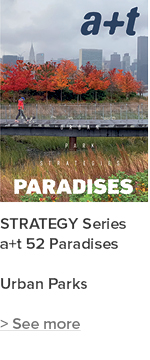
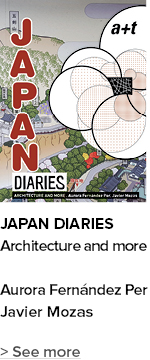


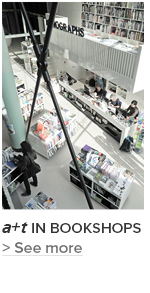
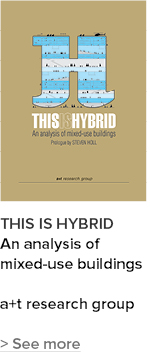
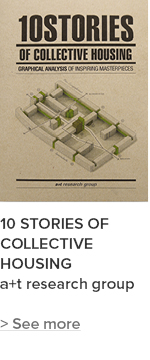

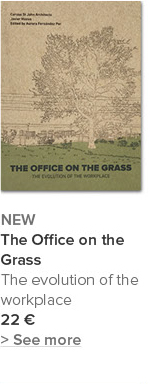

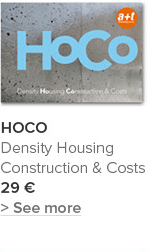
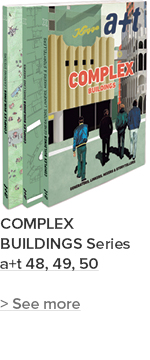
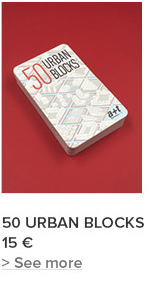

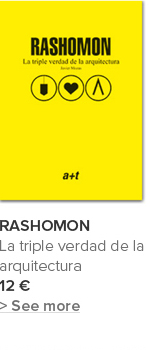
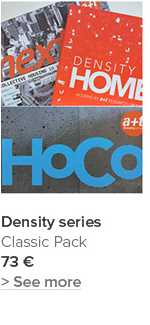

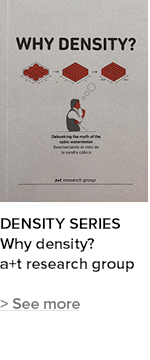



 I've read and agree to
I've read and agree to 


